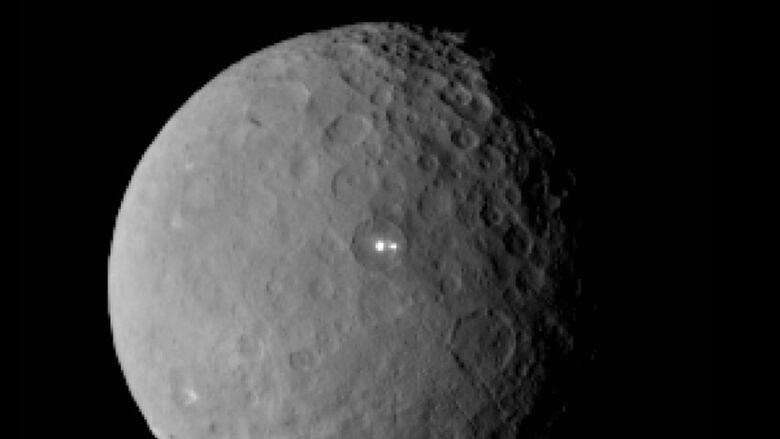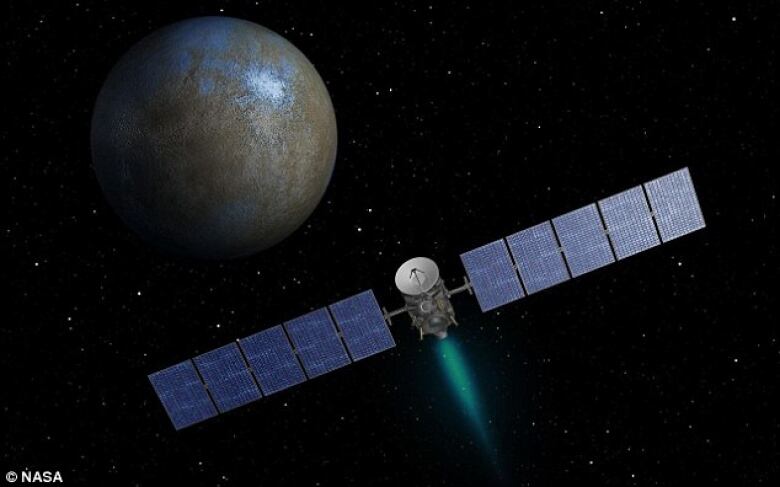Ceres bright spots shrouded in mystery
Most prominent spot 'brighter than anything else on Ceres,' researcher says

NASA scientists have seen the light. And it appears, on closer inspection, to have a "companion."
The problem is that researchers have little idea what the shiny spots observed on the mysterious dwarf planet Ceres could mean.
The space agency's Dawn spacecraft sent the photos back from the dwarf planet locatedbetween Mars and Jupiter, showing what appearto be tiny bright areas amid a rocky grey surface, lying side-by-side inside a circular depression,
The latest images were snapped at a distance of nearly46,000 kilometres from Ceres.

- Water vapour spouts from dwarf planet Ceres
- Dwarf planet Ceres captured by NASA's Dawn spacecraft cam
Dawn mission investigators have noticed a bright spot on the dwarf planet's surface before, but the new higher-resolution pictures indicate there are actually two bright areasclosetogether.
"Ceres' bright spot can now be seen to have a companion of lesser brightness, but apparently in the same basin,"Chris Russell, principal investigator for the Dawn mission, said in a statement.
Ice theory
"This may be pointing to a volcano-like origin of the spots, but we will have to wait for better resolution before we can make such geologic interpretations."

Dawn is expected to enter orbit around Ceres on March 6, giving scientists another opportunity to get sharper views of the dwarf planet, which is estimated to have an average diameter of about 950 kilometres. By comparison, Earth has a diameter of roughly 12,742 kilometres.
"The brightest spot continues to be too small to resolve with our camera, but despite its size it is brighter than anything else on Ceres,"saidAndreasNathues, lead investigator for the framing camera team at the Max Planck Institute for Solar System Research. "This is truly unexpected and still a mystery to us."
Experts have speculated that the glimmers captured on its surface may be ice reflecting sunlight.
Dawn's mission, whichbelongs to NASA's Discovery program, is to orbit one member of the main asteroid beltVesta.












_(720p).jpg)


 OFFICIAL HD MUSIC VIDEO.jpg)
.jpg)



























































































